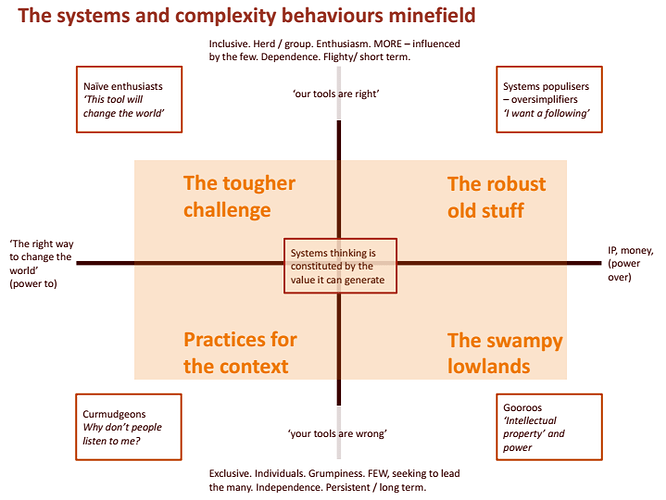For those trying to make sense of distinctions between the varieties of communities of interest, @antlerboy reiterates some prior postings about systems thinking, complexity and cybernetics.
Hey @antlerboy tell us why complexity thinking is systems thinking, is cybernetics?
— Mahoo @StayintheDojo (@SystemsNinja) April 21, 2020
🤓
… from https://twitter.com/SystemsNinja/status/1252683456779354114 .
The response is better read as “Bringing together some recent and old threads on #systemsthinking is #complexity is #cybernetics” | Benjamin P Taylor | April 21, 2020 | Systems Community of Inquiry at https://stream.syscoi.com/2020/04/21/bringing-together-some-reason-and-old-threads-on-systemsthinking-is-complexity-is-cybernetics/
For those who like visuals … there’s “The systems and complexity behaviours minefield” slide 1, with "All four ‘behaviour types’: this is systems thinking’ is in the center, …
… and the slide 2 with the tribes wearing badges …
… extracted from Benjamin’s PDF.
The reasoning is unpacked at “Bringing together some recent and old threads on #systemsthinking is #complexity is #cybernetics”.
There’s an implicit question as to whether it’s possible to separate knowledge from the individuals. I defer to C. West Churchman in that “only people know”.
… to conceive of knowledge as a collection of information seems to rob the concept of all of its life. [….] In other words, knowledge resides in the collection. It is how the user reacts to the collection of information that matters. [Churchman 1971, p. 10]
Reference
Churchman, C. West. 1971. The Design of Inquiring Systems: Basic Concepts of Systems and Organization . Basic Books.


